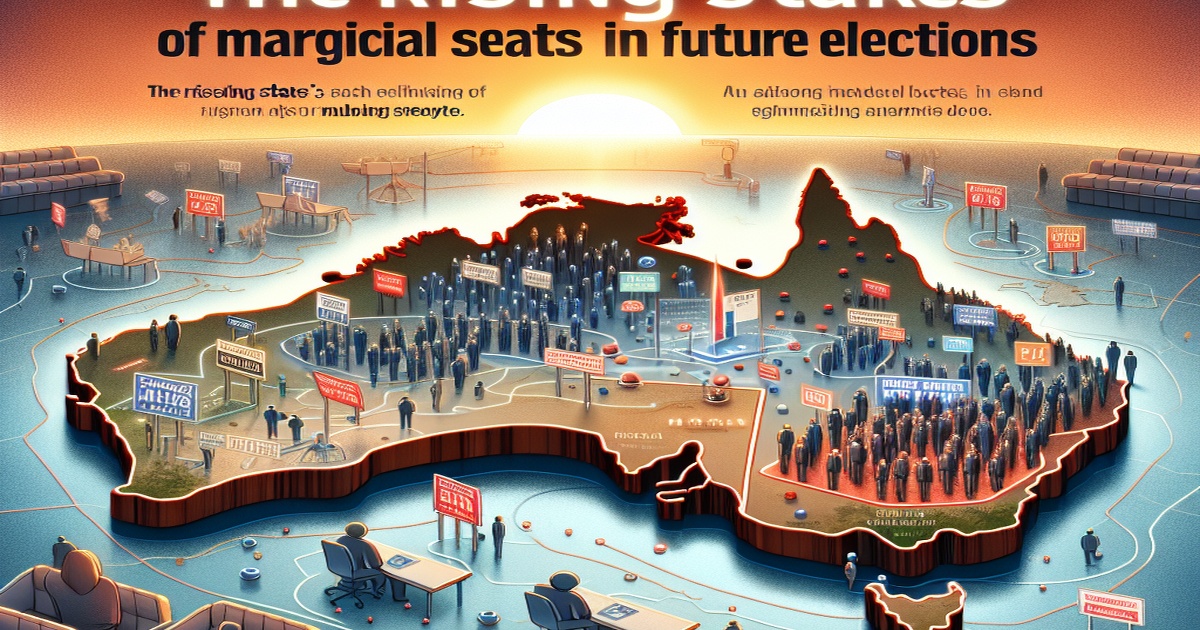The competition to form the next Australian government is leaning heavily toward marginal seats, which have become the prime battleground for political advertising and leader visits. These districts play a crucial role in which party takes power, especially as the influence of independents and minor parties grows, complicating the traditional two-party system.
In Tasmania, a seat historically held by Labor since 1993 is under threat from Peter George, an independent candidate focused on environmental concerns, particularly the contentious salmon industry. The issue gained national attention, with celebrities like Leonardo DiCaprio chiming in, highlighting community dissatisfaction with the industry. While George faces significant challenges, such as the Liberal Party's preference for Labor, the shift in local sentiment could indicate potential surprises. Adding to the intrigue is Brendan Blomeley, a former Liberal member now running as an independent.
In Queensland, the seat of Dickson, held by Peter Dutton, is under scrutinous eyes. Despite being defended by a slim margin of 1.7%, traditional expectations suggest Dutton should retain his position, bolstered by his recent elevation to opposition leader. However, Labor is pushing to assert its campaign in this district, making the seat more competitive, especially with independent Ellie Smith also vying for votes.
Another race to watch is in Central West NSW, where former Nationals MP Andrew Gee is campaigning as an independent after leaving the party due to disagreements over the Voice to Parliament referendum. His presence in the race could split conservative votes with the new Nationals candidate Sam Farraway, while independent Kate Hook also aims to challenge for the seat, following a strong performance in the previous election.
In Perth's Moore seat, once considered safe for the Liberals, shifting voter dynamics have brought it into question after a narrow victory for Labor in recent elections. Ian Goodenough, the long-standing Liberal member, now runs as an independent without recommending preferences, which could complicate the electoral outcome against Labor's Tom French.
Additionally, several traditionally safe Labor seats are facing challenges from independent candidates backed by community groups in response to international conflicts. Though these regions seem unlikely to flip, any shifts in primary votes may reflect larger changes in voter attitudes, especially among Muslim communities.
Lastly, in a northeastern NSW seat, previous conservative strongholds are witnessing a lively competition as Labor continues to hold the ground against the Greens. Justine Elliot's position is vulnerable should local primary votes indicate a swing toward the Greens, particularly with Mandy Nolan representing them once again. Overall, the landscape leading up to the 2025 election is dynamic, with potential for unexpected outcomes stemming from local issues and the rise of independent candidates.







5 Comments
G P Floyd Jr
This is missing the bigger context. It's focusing on details instead of the broad strokes of policy and leadership.
Martin L King
Goodenough going independent? In Moore? That's a shake up! The article clearly highlights this shift.
G P Floyd Jr
This is a great overview! The rise of independents and the focus on marginal seats is definitely the story to watch in 20
Rolihlahla
The article rightly points out that it's not just about the big parties anymore. Local issues and candidate personality are gaining traction.
Muchacho
Detailed and insightful analysis. The mention of Muslim community voting shifts shows nuanced understanding of evolving electoral dynamics.